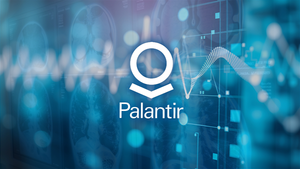- Pathological hallmarks of ALS are characterized by alterations in inflammation and oxidative stress, with oxidative stress playing a critical role in neuronal damage.
- 4-hydroxy-2-nonenal (4-HNE) is a key mediator of oxidative stress in cells and tissues.
- Analysis of blood biomarker data from two clinical trials of Treg-enhancing therapies in patients with ALS demonstrated a strong correlation between clinical response and levels of 4-HNE and inflammatory biomarkers monocyte chemoattractant protein-1 (CCL2) and interleukin (IL-18).
- Coya intends to leverage these correlative biomarkers in its planned fully powered placebo controlled clinical trial with COYA 302 in patients with ALS.
Coya Therapeutics, Inc. (NASDAQ: COYA) (“Coya” or the “Company”), a clinical-stage biotechnology company developing multiple therapeutic platforms intended to enhance Treg function, including biologics and cell therapies, today reported the publication of a research article entitled “Immunological, Oxidative, and Structural Factors and Their Responses to Regulatory T Lymphocyte Therapy in Amyotrophic Lateral Sclerosis” in the peer-reviewed journal Ageing and Neurodegenerative Diseases. The publication can be accessed here.
The publication reports the analyses of blood biomarker data from a cross sectional cohort of sporadic ALS patients (n = 30) and healthy controls (n=10) and from two investigator-initiated clinical studies (IIT) (n=11). In the IIT studies, patients were treated with expanded Treg cell therapy in combination with low-dose interleukin-2 (IL-2). As previously reported, patients from these two trials experienced amelioration of disease progression with corresponding increased Treg numbers and suppressive function.
Evidence strongly supports the role of inflammation and oxidative stress in the severity and rate of disease progression in ALS. These new biomarker data demonstrate that enhancing Treg function improves clinical outcomes with accompanying changes in blood levels of oxidative stress markers, such as 4-HNE, and inflammatory markers, including CCL2 and IL-18, and may have the potential to serve as objective biomarkers of disease progression and clinical trial endpoint surrogates to therapies that enhance Treg function.
Stanley Appel, M.D., Chairman of Coya’s Scientific Advisory Board, commented, “Our pre-clinical studies have suggested that oxidative stress results from and promotes neuroinflammation and neuronal injury in ALS. It is gratifying that biomarkers of oxidative stress - 4-HNE and ox-LDL - correlated with responsiveness to therapy in 2 ALS clinical trials of Treg-enhancing therapies, and may provide an objective confirmation of clinical benefit in forthcoming trials.”
Following these encouraging results, Coya plans to assess blood markers of oxidative stress and inflammation systematically and prospectively in the upcoming well powered placebo controlled clinical study of COYA 302 (Treg-enhancing biologic combination) in patients with ALS, aiming to provide a better understanding of the disease, with the ultimate goal of developing consistent biomarkers to evaluate treatment response.
About Coya Therapeutics, Inc.
Headquartered in Houston, TX, Coya Therapeutics, Inc. (Nasdaq: COYA) is a clinical-stage biotechnology company developing proprietary treatments focused on the biology and potential therapeutic advantages of regulatory T cells (“Tregs”) to target systemic inflammation and neuroinflammation. Dysfunctional Tregs underlie numerous conditions including neurodegenerative, metabolic, and autoimmune diseases, and this cellular dysfunction may lead to a sustained inflammation and oxidative stress resulting in lack of homeostasis of the immune system. Coya’s investigational product candidate pipeline leverages multiple therapeutic modalities aimed at restoring the anti-inflammatory and immunomodulatory functions of Tregs. Coya’s lead therapeutic programs include Treg-enhancing biologics (COYA 300 Series product candidates) COYA 301 and COYA 302, which are intended to enhance Treg function and expand Treg numbers. COYA 301 is a cytokine biologic (proprietary low dose IL-2) for subcutaneous administration intended to enhance Treg function and expand Treg numbers in vivo, and COYA 302 is a biologic combination (proprietary low dose IL-2 and proprietary CTLA4-Ig) for subcutaneous and/or intravenous administration intended to enhance Treg function while depleting T effector function and activated macrophages. These two mechanisms may be additive or synergistic in suppressing inflammation. For more information about Coya, please visit www.coyatherapeutics.com
Forward-Looking Statements
This press release contains “forward-looking” statements that are based on our management’s beliefs and assumptions and on information currently available to management. Forward-looking statements include all statements other than statements of historical fact contained in this presentation, including information concerning our current and future financial performance, business plans and objectives, current and future clinical and preclinical development activities, timing and success of our ongoing and planned clinical trials and related data, the timing of announcements, updates and results of our clinical trials and related data, our ability to obtain and maintain regulatory approval, the potential therapeutic benefits and economic value of our product candidates, competitive position, industry environment and potential market opportunities. The words “believe,” “may,” “will,” “estimate,” “continue,” “anticipate,” “intend,” “expect,” and similar expressions are intended to identify forward-looking statements. Forward-looking statements are subject to known and unknown risks, uncertainties, assumptions and other factors including, but not limited to, those related to risks associated with the impact of COVID-19; the success, cost and timing of our product candidate development activities and ongoing and planned clinical trials; our plans to develop and commercialize targeted therapeutics; the progress of patient enrollment and dosing in our preclinical or clinical trials; the ability of our product candidates to achieve applicable endpoints in the clinical trials; the safety profile of our product candidates; the potential for data from our clinical trials to support a marketing application, as well as the timing of these events; our ability to obtain funding for our operations; development and commercialization of our product candidates; the timing of and our ability to obtain and maintain regulatory approvals; the rate and degree of market acceptance and clinical utility of our product candidates; the size and growth potential of the markets for our product candidates, and our ability to serve those markets; our commercialization, marketing and manufacturing capabilities and strategy; future agreements with third parties in connection with the commercialization of our product candidates; our expectations regarding our ability to obtain and maintain intellectual property protection; our dependence on third party manufacturers; the success of competing therapies or products that are or may become available; our ability to attract and retain key scientific or management personnel; our ability to identify additional product candidates with significant commercial potential consistent with our commercial objectives; and our estimates regarding expenses, future revenue, capital requirements and needs for additional financing. We have based these forward-looking statements largely on our current expectations and projections about future events and trends that we believe may affect our financial condition, results of operations, business strategy, short-term and long-term business operations and objectives, and financial needs. Moreover, we operate in a very competitive and rapidly changing environment, and new risks may emerge from time to time. It is not possible for our management to predict all risks, nor can we assess the impact of all factors on our business or the extent to which any factor, or combination of factors, may cause actual results to differ materially from those contained in any forward-looking statements we may make. In light of these risks, uncertainties and assumptions, the forward-looking events and circumstances discussed herein may not occur and actual results could differ materially and adversely from those anticipated or implied in the forward-looking statements. Although our management believes that the expectations reflected in our forward-looking statements are reasonable, we cannot guarantee that the future results, levels of activity, performance or events and circumstances described in the forward-looking statements will be achieved or occur. We undertake no obligation to publicly update any forward-looking statements, whether written or oral, that may be made from time to time, whether as a result of new information, future developments or otherwise.
View source version on businesswire.com: https://www.businesswire.com/news/home/20230831425850/en/
Contacts
David Snyder, CFO - Coya Therapeutics, Inc.
david@coyatherapeutics.com
Hayden IR:
James Carbonara
646-755-7412
james@haydenir.com
Media Contact
Anna Marie Imbordino
annamarie@quantum-corp.com
917-680-8765







